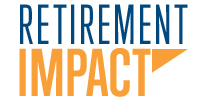Why Form 5500 Filing Matters for Your 401(k) Plan
If you’re a plan sponsor of a 401(k) or 403(b) plan, one of your most essential fiduciary duties is to file Form 5500 annually. This isn’t just another compliance task, it’s a public disclosure document reviewed by the Department of Labor (DOL) and IRS to ensure that your retirement plan is operating according to ERISA rules.
What Is Form 5500?
Form 5500 is a federally required document that collects financial, investment, and operational information about your employee benefit plan. Think of it as the IRS and DOL’s window into your plan’s health, costs, and compliance.
There are several versions: Form 5500 for plans with 100+ participants; Form 5500-SF for “small plans” (fewer than 100 participants); Form 5500-EZ for owner-only or one-participant plans.
Who Must File?
If your business sponsors a qualified retirement plan subject to ERISA (like a 401(k)), you’re likely required to file, unless you’re operating an exempt owner-only plan. This includes: – For-profit companies; Nonprofits with 403(b) plans; Churches and governmental plans (with some exceptions)
What Information Is Reported?
The form asks for:
- Basic plan demographics
- Participant counts
- Financial statements (assets, liabilities, contributions)
- Service provider compensation
- Compliance questions (e.g., loans, late deposits)
Plans with over 100 participants may also require an independent audit attached to the filing.
What Form 5500 Tells You About Your Plan
Filing Form 5500 is more than a regulatory obligation. It provides a snapshot of your plan’s performance and administration. Here are key insights it offers:
- Fee Transparency: You’ll see how much your plan pays in investment management fees, recordkeeping charges, and advisory services. This information is critical for evaluating fee reasonableness and meeting fiduciary obligations.
- Participation Metrics: The form includes data on the number of active participants, terminations, and eligibility trends. This helps identify engagement issues or potential red flags for nondiscrimination testing.
- Plan Contributions: Form 5500 discloses employer and employee contributions for the year. This can help you benchmark contribution levels and spot trends in participant savings behavior.
- Investment Allocation: The form lists plan investments and balances. Sponsors can use this data to review diversification, performance, and whether plan assets align with investment policy statements (IPS).
- Loan and Distribution Activity: High loan or hardship distribution activity may signal financial stress among employees, suggesting a need for financial wellness initiatives.
- Plan Compliance History: If your form indicates late deposits, plan restatements, or frequent amendments, it could highlight compliance weaknesses or areas needing better governance.
Understanding what Form 5500 reveals about your plan can guide improvements and help document fiduciary processes for future audits or DOL inquiries.
Key Deadlines
The standard deadline is seven months after the end of your plan year (typically July 31 for calendar-year plans). You can request an automatic 2.5-month extension (to October 15) using Form 5558.
What Happens If You Don’t File?
Missing or incomplete filings can result in steep penalties:
- Up to $2,670 per day (as of 2025) from the DOL
- IRS penalties, though often lower, can also apply
The DOL’s Delinquent Filer Voluntary Compliance Program (DFVCP) can help reduce penalties if you catch a mistake before the government does.
How to Stay Compliant
- Use a compliance calendar to track deadlines
- Coordinate with your recordkeeper, TPA, and auditor early
- Review your data carefully. Errors in reporting service provider fees or participant data can trigger audits
- Document your filing process in your fiduciary file
Closing Thoughts
Form 5500 filing isn’t just a regulatory box to check, it’s a critical part of fiduciary governance. A clean and timely filing helps demonstrate prudence, compliance, and operational oversight.
If you’re unsure whether your filings are accurate or up to fiduciary standards, consider a governance checkup. For personalized guidance, contact us using the form below.

